Character Genes and Subtypes
This page will hold the information for our specific genes, subtypes and curses characters may be; this includes the Xaeri-gifted Anima, the shapeshifting gene, our enigmatic ghosts, and many more. Most of these subtypes may affect various species, have any alignment, and are not often restricted to certain Realms. However, exceptions do exist; read on for more information!
The Anima
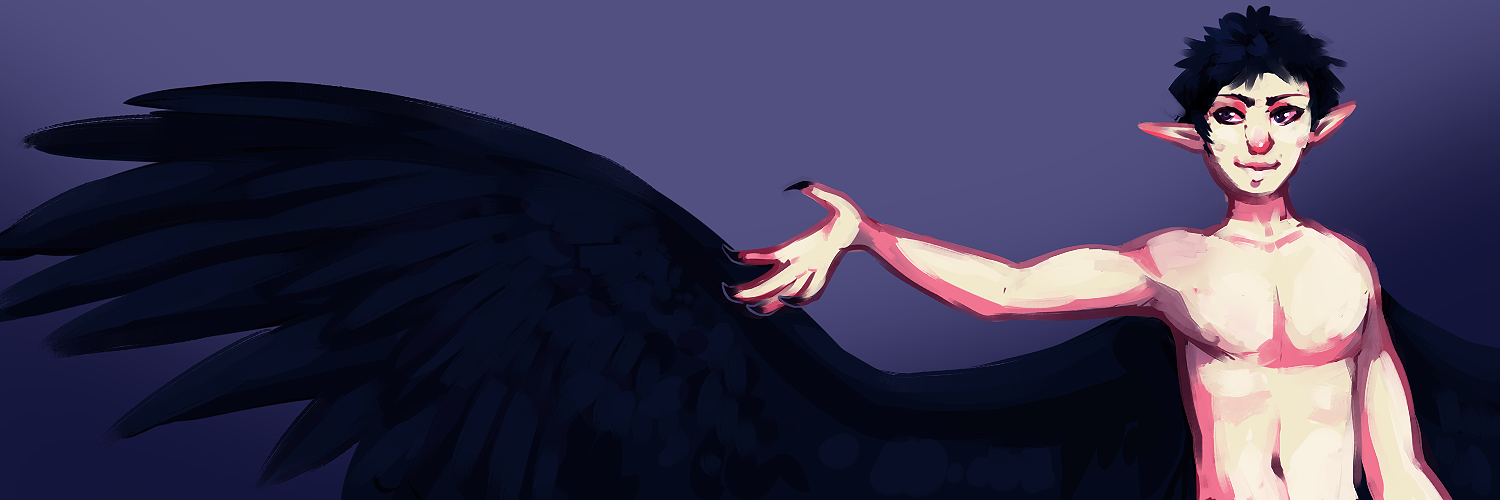
The gods of Xaeri are known to be one of the most compassionate pantheons in the Realms; ever-present guardians of their home and its inhabitants, they may rarely come forward and grant gifts to those in dire need of help. Attuned as they are to animals of Sky, Earth, and Sea, the most common of these gifts are the Animan: the gift of an animal affinity to an individual who would, without such a boon, have their lives claimed by death. It is unknown whether or not the Three grant these gifts outside of Xaeri, or if other gods are capable of mimicking the boon, as no other cases have yet been recorded.
This gift is known as the Yalei on Ani'mim'a, or Blessing of Anima, and individuals who are granted thus are known as the Xaerin Animan or, very simply, an Anima. The meaning of the name seems to have some ties to the Lai'sen word "ani'm" which is known to mean 'animal', and "im'a" which means 'gift' - however, over many years, the name has simply been condensed to Anima by those unused to the intricacies of the Lai'sen language.
An Anima blessing is directly tied to an individual's mindbeast at the time that the gift is given; for example, a human with the mindbeast in the shape of a winged wolf may be granted an Anima of a wolf, or a dragon with the mindbeast of a snake may be granted an Anima of a serpent. The ability of the Anima depends on what animal affinity the Xaerin gods awaken from the mindbeast, and the strength of the Anima can be trained from partial transformation to full shifting. Most commonly, those Animan may transform parts of their bodies to resemble those of their affinity, much like the xeriin; these include wings, claws, tails, and other such 'demi-forms'.
All Anima have certain permanent physical changes, usually internal or peripheral, that they may not shift out of. These include things like enhanced senses (sight, scent, hearing, etc), larger lungs, the ability to breathe underwater, and other abilities directly related to whatever animal affinity was awakened. With enough training, an Anima may learn to fully transform into their animal shape, but these rarely go beyond natural animals; though unnatural colors are common, things like extra horns, wings, limbs, etc and certain mythical animals, such as the dragon and gryphon, are exceptionally rare.
The Anima is a god-born gift, and therefore does not fade or change. When first granted, the individual in danger's wounds will be healed as the Anima animal affinity physically alters the individual being saved; this cannot happen twice, and does not result in complete immortality. The new-made Anima will need to escape whatever danger they find themselves in alone afterwards, and wounds that are inflicted after the fact may not be healed by the Anima in any transformation.
Traditionally, Animan animal affinities do not change over the course of their lives, even if their mindbeast morphs into something entirely different. However, any Animan that go on to live out their lives have a rare chance of passing their Anima on to offspring; but these bred-Anima are never able to take a full transformation, and their animal affinity may change without warning as their mindbeast evolves over time.
Demonic Reapers
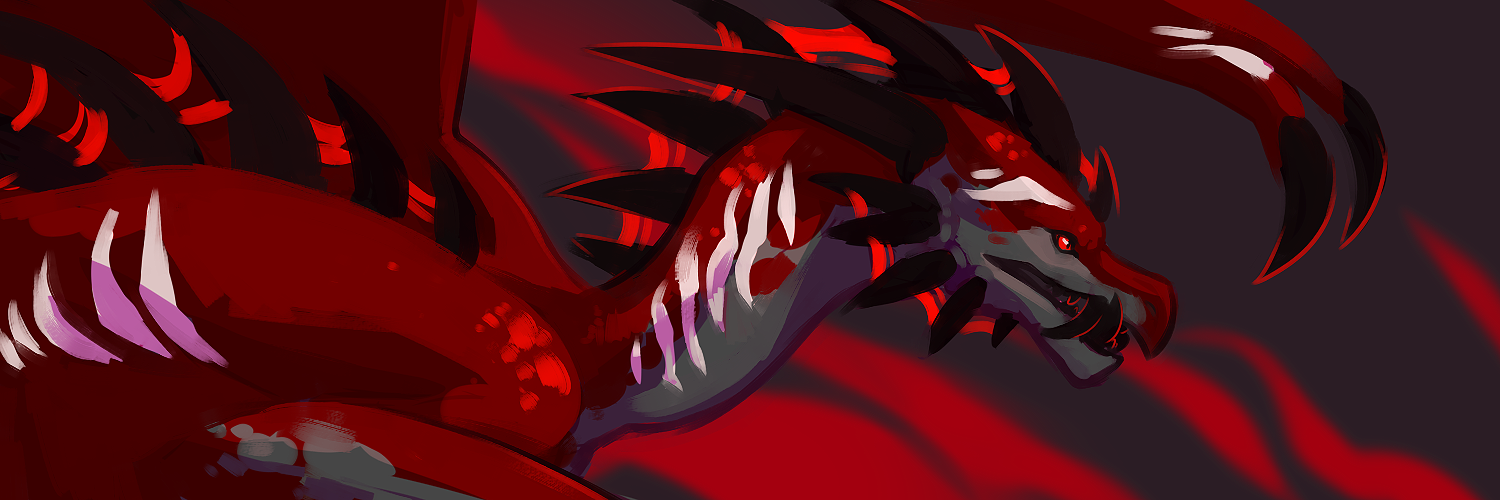
Demonic Reapers are a unique subtype created by the Death Kingdom long ago; though they are not as rare as the Reapers (of demon blood), they are nevertheless are quite rare themselves, acting as very strong and deadly weapons in the Death Kingdom's military. Those with freedom who have escaped the bonds of Death are rarer still, as all are subject to the whims of the current reigning Lord.
These Demonic Reapers can be of any species, humanoid or animalistic, that have a soul strong enough to sustain the joining with another, demonic spirit, and the transition between subsisting only on physical food to having a diet interspersed with both the souls of the living and the dead. After the change, they change in appearance greatly - all lose their original coloration, instead gaining patterns of white, black and red in varying shades, usually consisting of stark markings with little blending in-between. Their eyes can be of any color, though red is most common, and they often glow fiercely both in light and dark. Due to the influence of the demon soul joining with the spirit of another species, other mutations may occur, such as extra horns, fangs, extra tails or wings, etc.
All can be marked not only by their unusual colors and markings, but also by their double souls. Their normal spirit, and that of the demon Reaper, will be intricately intertwined, often unable to be severed without the death of one or both. Each soul is its own entity, as well; the host's soul, most often in power, and the demon's soul, that once belonged to a Reaper before they were slain. They will also have both reiatsu colors, intertwined like that of their spirits; both of the tainted host's (which usually falls in color to something very dark, and/or muted), and that of the demon's.
The original Reaper - the demon soul bonded to them - can take control either if the Demonic Reaper wills them to, or they take over by force. The Demonic's appearance will then reverse (white to black or black to white, though red generally stays the same) and they may gain a variety of other features, such as ethereal, ghostlike qualities, longer and sharper claws/fangs/horns, a wilder physical appearance, or almost anything else. They are much more powerful, and almost completely uncontrollable. However, they cannot hold such a form for very long.
To sustain themselves and the soul they are paired with, Demonic Reapers must devour either the spirits of the living or the dead, with the average being at least a single sentient soul a week. If they do not reap such souls, their own will begin to severely degrade, either to the point of the original Reaper coming out to hunt on his or her own, or the death of both entities, as well as the body of the host. Madness may set in after too long without a meal, especially if the host is actively trying to starve themselves of a spiritual meal.
Do note that devouring reiatsu will not be enough to sustain a Demonic Reaper for long; an entire soul, living or dead, must be consumed, lest they face death and starvation themselves.
Druids

The druid is much like both the Anima and shifter in that it isn't restricted to a single species, but is open to all humanoid species, most common in elves of various types. They are thought to be native to Evylon, near Heartwood, where the Felnovian god Balion gave a subset of elves a powerful gift and a bond to various types of animals.
Most often, druids are not aware of their abilities until they come of age in their species - when they first find their ability to shift, it is often mistaken for a simple shifting gene. However, druids have a unique and powerful connection to nature, and can speak with plants and animals both. Some have the ability to 'sing' plantlife into growing in a way that they will it to, much like the fauns that they hold great kinship with. Rarely, older druids will be able to combine with the earth in such a way to avoid detection, at the risk of it becoming very permanent, leading to their eventual death. A druid will be bound to a single animal spirit, and once they know what they are, most wear some sort of trinket or insignia depicting what their animal affinity is.
Unlike the Xaeri-gifted Anima, a druid may be able to shift into any sort of species, with any sort of coloration; however, they lack a demi-form of any kind, and may only switch between the humanoid form and their single animal one. Some are prone to having plants grow on their animals, becoming more and more common with age.
Druids who have formed groups to live in are generally led by a patriarchal society, strictly governed and very attuned to nature. They often travel, and settle closest in heavily wooded areas near elves, halflings, and fauns, shunning the more destructive species like humans, demons, and dwarves. They live off of the land, and replace whatever they take, holding the spirits of all living things above their own.
Empyreans

Much like the druid, shifter, and Anima, the Empyrean can be of any species, humanoid or non-humanoid. Their origins are shrouded in mystery, but it is claimed that the original Empyreans were dragons. They are believed to have originated on Millirand, in the Darklands.
Empyreans are not born. Rather, they are created through an alchemical process that involved replacing their blood with the black oil-like ichor of Kurdan, Death's fallen champion. The next step in becoming a full Empyrean often involves replacing limbs or other parts of the body with enchanted metal replacements, superior in strength and durability. While some Empyreans still resemble their original forms, superficially as it may be, others lose much of their resemblance to their original species. The process often results in interfering in elemental magics, typically weakening or removing such altogether.
The majority of Empyreans follow the teachings of Cylene Slithersteel, the First Empyrean, generally referring to themselves collectively as Slithersteel. They live in hidden cities beneath the Darklands on Millirand, and are very rarely spotted as a result.
The Empyrean process can be reversed, although it is a difficult, painful process to excise the ichor from the body. Former Empyreans often bear physical and mental scars as a result.
Ghosts and Spirits

Spirits and ghosts in BTACD play a very large part in multiple plots. Unlike the ghosts of Earthrealm, and the stories of the ancient humans, ghosts throughout the Realms are incredibly diverse and very different from the norm. Though there are ghosts much like those we are used to, the greater majority are quite different. Below, we will explore the various types of ghost, how rare they are, and what may mark them apart from other spirits. From the faded, Ancient souls to the masterful Greater Ghosts, these will be explained in as much detail as our scholars can manage!
Faded Spirits
Ancient and powerful souls that have lost their personalities and bodies, appearing as ethereal, floating orbs with long, multi-hued tails of light. Generally, they are found in the Spirit Realm alone, wandering in loose groups, as well as in splinter Realms split from the Soulplane. They can be interacted with, but barely - should one bring about their ire, it spells doom for any living thing in their way. Most are peaceful, and radiate calm, though there are a few that shine black with meaningless malice against all who live. They are known to be ancient spirits who have been forgotten by the living, but so powerful that they continue their existence in a state of constant being, despite losing who and what they are.
Faded spirits are known to be one of the most dangerous things in all of the Realms, as their ancient power - pure, condensed energy, coalesced over thousands upon thousands of years - is so volatile and chaotic. It scorches the spiritual energy of the living, and can burn through an entire city within moments. Few know how to stop a rampaging faded soul if one is brought to the Living Realms and released, and so both study and use of them is outlawed by all facets of the mage and knight Orders due to the danger in their use. Use of these souls generally marks some sort of cataclysmic event, such as the Cataclysm that broke the north of Alubria and turned the island of Nau'katu into the great sky-continent of Stroen'na.
Residual Ghosts
These are ghosts who have lost much of what they were, and leave an imprint of their souls, personalities, and selves upon a particular place in the Living Realms. Though not nearly as powerful as faded souls, they have the ability to haunt a specific location, and communicate with the living through various indirect means. They cannot assume a corporeal form, nor communicate with any except those with the rare ability to sense and talk to such spirits. They are invisible, and mute, to all normal beings.
Most often, these ghosts will leave small trinkets - such as a single piece of jaden - in a spot where it will easily be found, or flicker gemlights or torches. Louder ghosts may bang doors or window shutters, knock things over, or break objects. Vengeful, stronger residuals will consistently break things, make a home very cold or very hot, lock the occupants in or out, and other less desirable things.
Lesser Ghosts
Lesser ghosts, unlike residual ghosts, are those who have retained their sense of self and are left in the world of the living for a variety of reasons. Some may be trapped here by stronger, vengeful spirits. Others might not know they have died, or may seek justice for some wrong that happened in their life. Others might stay to watch a family member or relative, protective and guiding, such as a father who seeks his children's success in life.
Most lesser ghosts, like residual ghosts, cannot take a corporeal form, though some are able to be visible in flashes or surges of energy, or laying in wait for a lion period of time to gather enough to become visible for a short period of time. All other interactions are much like the residual ghosts, in that they must communicate indirectly. Most lesser ghosts are peaceful in nature, as poltergeists are often purged by spiritwalkers for their malicious hauntings.
Neutral Ghosts/True Spirits
Primarily beings who exist either in the Spirit Realm or Ghost Realm, with a few being found in Hell or other splinter Realms. If a ghost wishes to live as it once did, yet doesn't wish to 'live' in the Living Realms as a Greater Ghost (or if they are not strong enough to do so), Linath may guide that spirit to the Ghost Realm where it may live in relative peace without the color-bleached surroundings of the vast Spirit Realm.
True spirits and neutral ghosts often take the appearance of when they were most comfortable in their life. Most often, this is a point just before their death, though elderly dead may appear much younger. Rarely, a spirit will appear with the wounds that they died with, being malicious of heart or jealous of the living. In the spiritual Realms, they will appear exactly as they did when living, however when crossing over into the Living Realms, they may gain an ethereal, translucent quality. Many appear bluish, silvery or white, and glow with varying degrees of brightness.
Most spirits, when appearing for a short time in the Living Realms as a neutral ghost, can only hold their forms for a certain period of time, then they must cross back over. In this time, they can be seen and heard (rarely felt) by the living, and may communicate in whatever way they wish. Most are unable to handle objects or become corporeal enough to touch things, and instead often phase through whatever may be in their way, should they not pay attention.
Neutral ghosts and true spirits are often thought responsible for most dreams having to do with the dead; malicious ghosts bring nightmares in their brief time among the living.
Greater Ghosts
Unique are those strong enough in spirit to take a fully physical form. Called Greater Ghosts for their ability to blend almost seamlessly into the world of the living, these are the beloved of Linath, who go on as they did in life usually for some form or purpose. This can be anything from a sense of duty to family, and more; most remain to protect the loved ones they would leave behind, or keep the news of their death from reaching the ears of those they care for.
They may stay corporeal for an indefinite period of time, and are fully physical for all intents and purposes. Though unable to eat, drink, get sick or reproduce, they are capable of feeling both pain and pleasure, touch things, and handle objects. They may change their body's density to 'walk through walls' and become translucent, and are subject to being destroyed (or at least sent back to the Ghost Realm or Soulplane) by various physical and spiritual attacks. They also are subject to weariness and mental fatigue.
In battle, they are able to retain most of their abilities in life. However, using reiatsu may drain them of the energy they need to stay completely corporeal, and they may be forced to return to either the Ghost Realm or Spirit Realm to recover enough to come back. They can suffer from physical injuries that take spiritual energy to heal, which may also drain the ability to masquerade as alive. A select few are able to see these ghosts for what they are, as they emanate an invisible aura, and will often appear to 'glow' to these individuals. Some may leave afterimages as they move to those with the ability to see them.
Moryen'n

Moryen'n are, or were, sentient animals from across the Realms, infected by a powerful curse, doomed to become twisted, immortal mockeries of what they once were, too mutated to tell what they might once have been, and filled with an insatiable hunger for the flesh of other creatures. The curse is spread like a disease: coming in contact with the blood of the infected, being bitten, or scratched by their claws all have a chance of infecting the one they have come across.
Long ago, before the Dark Five were imprisoned and sealed away, one of Lithmor's machinations to ensure he escaped imprisonment was foiled by a coalition of Vystrian lions and wolves, together with a herd of unicorns, and several basilisks, gryphons, pegasi. Knowing his gambit had failed, and likely doomed his chances to escape being sealed away, Lithmor decided to 'reward' their courage, and cursed them. They would be gifted with terrible strength and great resistance to injury, immortality, and immunity from disease, but at the cost of their bodies twisting and mutating until they no longer resembled what they once were.
Collectively known as Moryen'n, Corruption-Touched, any who show signs of this infection are driven from their homes, if not killed, left to wander alone. Many who survive long enough tend to find homes in remote places with others of their kind, and often give rise to legends of haunted or cursed locations.
Wendigos
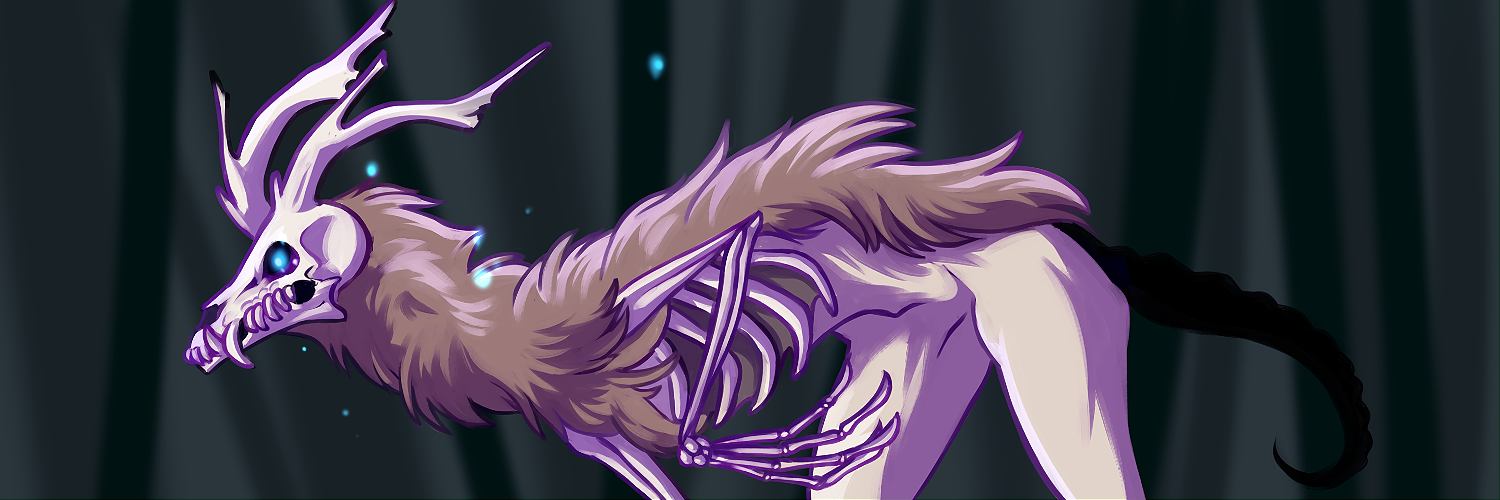
Wendigos were first created when Pestilence Mages, at the behest of their Lord, who was inspired by the tales of the Moryen'n, secretly captured some of the humanoid slaves used as 'cattle' by their Death and War rivals, and infected them with an altered form of the Moryen'n curse in the form of an oily black blood. They were then released back into Death and War territory, where they were initially successful in corrupting the slave population, driven for their insatiable hunger for humanoid flesh.
However, most of this first generation was eradicated by Death and War demons, and for a time, it was believed all of them were killed. This was not the case, as several had managed to escape, and found their way off of Kurai, whereupon they spread across the Realms.
Wendigos initially appear to be pale, emaciated, ghoulish humanoids, often mistaken for undead, although they are still living creatures. While freshly infected wendigos are only marginally stronger than their original species, they continually evolve as time passes, growing steadily stronger and more bestial, as well as more resistant to conventional weapons. Their skull structure undergoes the most radical change, growing to resemble a fanged deer skull, complete with branching antlers, while their bodies grow a covering of fur, and long, sharp claws sprout from their fingers and toes.
A fully evolved wendigo walks as easily on two limbs as on four, is fast enough to run down a horse, and strong enough to fight a full-grown ogre on even footing. They are capable of shrugging off even grievous wounds without slowing, and the only way to be sure they are dead is to completely destroy their bodies, as they are no longer susceptible to age or disease.
While most victims of wendigo attack wind up dead, anyone unfortunate to fall victim to one and survive runs a high risk of getting infected, and becoming a wendigo in turn. Exposure to the oily black ichor that serves as wendigo blood can likewise cause infection. It is also said that some demon royalbloods are immune to the effects of the wendigo infection, with the only sign being that they then have the black blood for the rest of their lives.
Shapeshifters
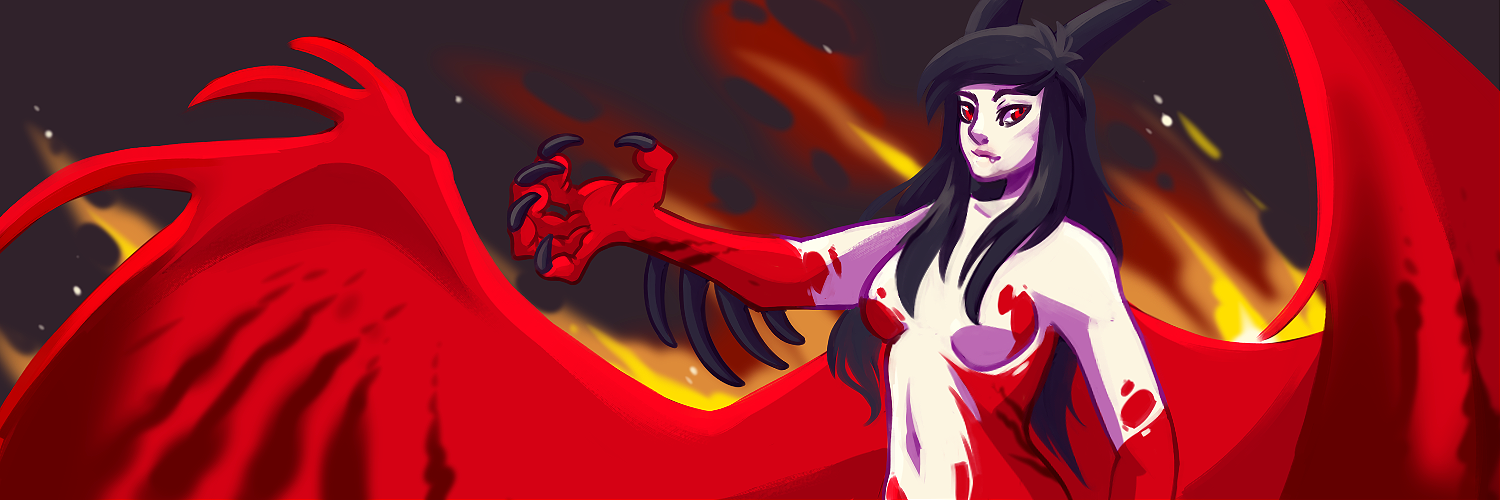
A shapeshifter, or shifter, is an individual that may transform from one shape into another. Common shapeshifters are classified distinctly as a sentient race with two or more forms not inherent to the species that they find themselves in; species that do not classify as shifters, that have an alternate form naturally, are all werecreatures, xeriin, circadian dragons, mimics, and other similar races. This is an ability that is generally understood to be a gene passed from parent to offspring; however, it may also be a granted ability, significant enchantment, or gifted in a variety of magical ways. Some shifters may discover their ability early in life, and some may discover it late - it differs per individual.
All shifters are different. Many only have a single form, but others may have multiple, though form changing tends to drain energy just as much as normal magic. With training, shifters may switch back and forth between different forms on the fly, several times per day. Some shifters have unique quirks if they have more than one alternate form - such as colors remaining the same, or being able to only shift into a certain type of animal; others may be able to transform into objects, though this is very rare.
Some shapeshifters may be afflicted with what is commonly known as Fading Madness; while related to the Faded phenomena (explained in the next section), these particular shifters are inflicted with horrific and incurable madness, often leading to rapid energy depletion and eventual death. They cannot control their shifting, and revert to very similar behavioral pattern as a rabid animal; they become dangerously violent and aggressive, before eventually overtaxing, leading to magical injury and sudden death.
Demon Shifters
Demons have specific restrictions on what they may shift into, as decided by the proud gods that created them. This affects any class, both royal and non-royal, and is split by Kingdom. However, demon hybrids are not restricted in any way - hybridized demons (such a demon/dragon, demon/human, demon/elf, etc) have been known to shift into a variety of different shapes, not limited to those of their Kingdom.
Death: The demons of Death that have a shifting gene or ability may only transform into the shape of canine animals. The most common is that of the wolf, but it may include any canid or canine-like species.
Famine: The demons of Famine that have a shifting gene or ability may only transform into the shape of feline animals. Most commonly, this includes - but is not limited to - large cats, such as lions, much akin to their leonine god. However, any feline or catlike species is possible.
Pestilence: The demons of Pestilence that have a shifting gene or ability may only transform into the shape of birds of any kind. While the most common is the form of a bird of prey, any avian creature is possible, both mythological and traditional.
War: The demons of War that have a shifting gene or ability may only transform into the shape of dragons. Any type of dragon, of any shape, size, and color, has been noted; these dragonforms cannot be told to be demon in nature, beyond scent or by an individual who may read auras.
Due to their rarity, shifters are a limited store item; please do not make one unless bought. Thank you!
Fadeds
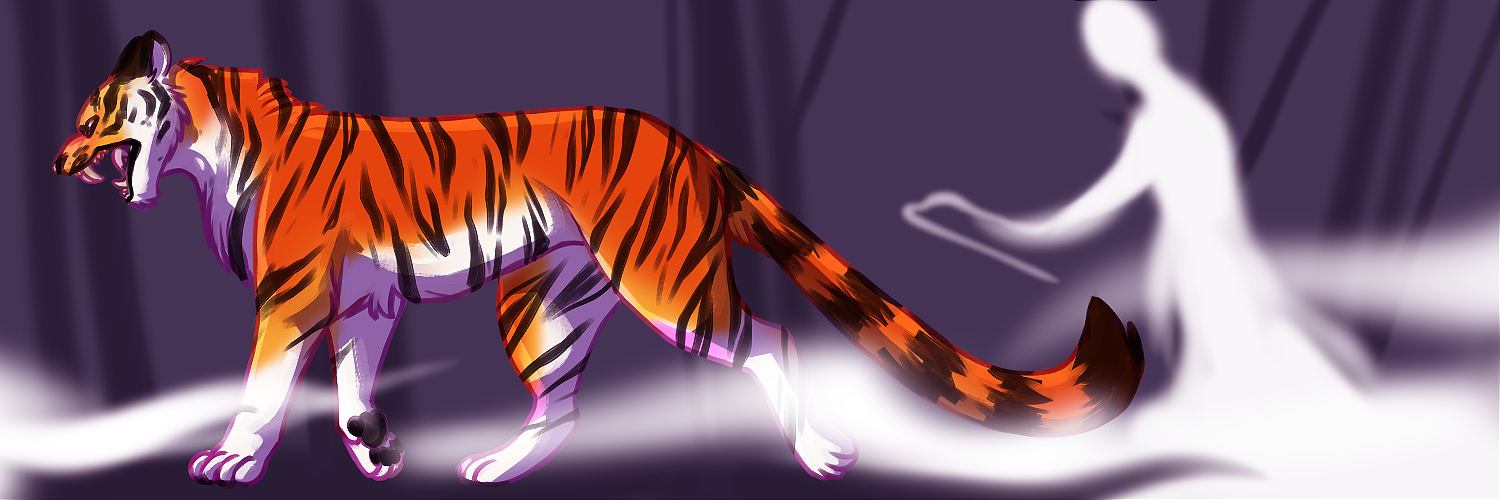
Fadeds are humanoids that begin as having two or more distinct alternate forms; many begin as shapeshifters or werecreatures, though any species that changes form may eventually Fade. Fading occurs when the order of primary and secondary forms switch, leaving the animal/mythological beast as the everyday and the humanoid an occassional form.
After this occurs, the humanoid form begins to gain animal characteristics. The eyes, hair, nails, teeth, and skin are usually the most affected - the severity depends on how long the shift has lasted. Personalities and memory may follow. A Faded eventually loses recollection of their humanoid life and even loses the knowledge of how to shift. They eventually become nothing more than an everyday member of their species.
Reasons for Fading hold many variations; it is usually caused by a tragedy or traumatizing event, such as a loved one dying or torture. For some it is merely that they feel more comfortable in this form and would like to devote themselves to it entirely.
In some cases, a Faded may eventually recall how to shift back or be driven to it subconciously by instinct or desperation. They may never regain the memories of their life, however, and they will never lose the features they have gained from the time they spent in their other form. The Faded wear the marks of their decision permanently.
Wardens

Wardens are spiritually bonded, sentient animal creatures that protect that which they are bonded to. There are three different types: Blood Wardens, Guardian Wardens, and Keeper Wardens. These Wardens are not found in any humanoid species, and cannot be non-sapient animals - only those intelligent species that populate the Realms may become Wardens. These Wardens can, in the case of Blood and Guardian, be bonded to either animalistic or humanoid races.
Wardens may only bond to a single thing depending on variant; either a single bloodline (Blood Wardens), individual (Guardian Wardens) or place (Keeper Wardens). Their lifespan, if shorter than their Ward, will slow in aging to match the one they protect, though this does not occur in Keeper Wardens at all. All Wardens may sense if their Ward is in danger or is hurt no matter the distance, and can telepathically communicate even if Realms apart.
Rarely, a Warden's bonds may be broken, either willfully by the ward or an outside, magical force. Wardens themselves cannot break the bond. If a bond is broken unwillingly, in whatever way, the bondless Warden may be driven insane with pain - those that survive are often desperate, savage animals that lose themselves in endless agony. Wardens who are released by their wards willingly will return to being normal members of whatever species they belong to.
Blood Wardens:
A Blood Warden is bonded to a bloodline instead of a specific individual; most are immortal, and are tasked with protecting important members of that bloodline. Usually, Blood Wardens are bonded to large or noble families, and tend to be larger and more powerful creatures than other Wardens are found to be. Most Blood Wardens begin as Guardian Wardens bound to the progenitor of that family, and the guardianship is passed down from parent to child for multiple generations.
Guardian Wardens
Guardian Wardens are the most common type of Warden. Bound to a single individual, their bond is strongest of all Wardens, and a Guardian Warden will often share specific pain and emotion over any distance. When a Guardian Warden's ward dies, they will often enter a state of extreme depression, and some may guard their ward's grave until either they die of starvation and neglect, or - oddly - turn completely to stone.
Keeper Wardens
Keeper Wardens are the weakest of the Wardens; these individuals will be bound not to a person, but a place. These Wardens are often mortal in lifespan, and so pass their Wardenship on to any offspring they may have. Among the Wardens, these are often bound to stay at the location they must guard, and very rarely - if ever - leave. Sphinx are common as Keeper Wardens beyond most other species, guarding places like temples, fortresses, and tombs in Ristell.
